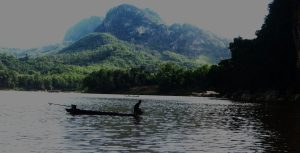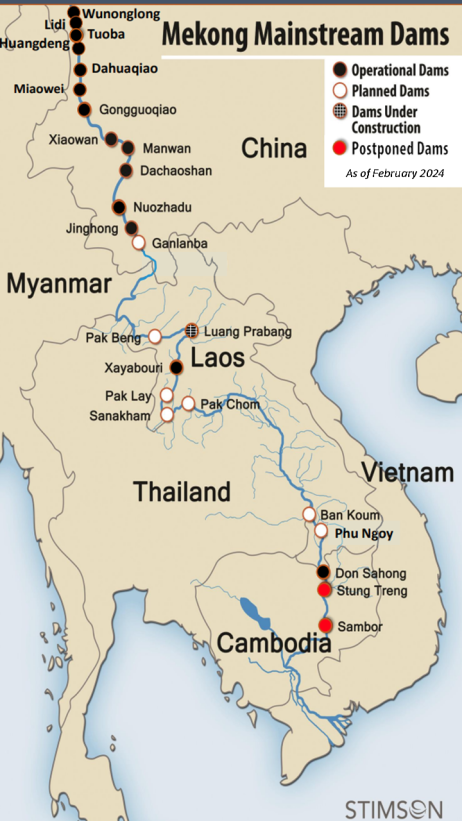The Mekong was once a river teeming with fish, providing food security for millions of poor farmers as well urban centers. These days, that river of abundance has disappeared, replaced by forlorn fishers who say they’re lucky if they can secure a catch at all, as more and more hydropower dams are being installed.
A peer-reviewed academic paper by Richard Friend et al, “Hydropower Development and the Neglect of Inland Capture Fisheries,” looks at how the importance of freshwater fisheries has been sadly overlooked and marginalized by Mekong policymakers.
Friend, an associate professor at the University of York and a former Mekong River Commission (MRC) consultant told The Diplomat, “Despite the substantial scientific evidence on the critical importance of fisheries to food security, nutrition and the devastating impact of dams on fisheries, there has been no shift in hydropower policy.”
The amazing ecosystem of the Mekong, ranked the third in the world for biodiversity, has come under immense pressure from 12 dams built in China, and a cascade of nine dams being developed downstream in Laos. Two dams in Laos – the huge Xayaburi and the Don Sahong – have so far been completed.
The MRC’s longstanding narrative of actively promoting sustainable hydropower as an engine of economic development sharply contrasts with the latest research from the MRC’s own Fisheries Department, which showed that the fisheries of the Mekong are in steep decline.
The most recent edition of the MRC publication “Catch and Culture” highlighted, “Of particular concern is the large number of migratory species threatened” based on fish monitoring from 2018-2022. “These species need free movement in both an upstream and downstream direction to complete their life cycles.”
The report continued: “Many of these species inhabit multiple ecological zones in the Mekong suggesting they may migrate between zones, again highlighting the importance of maintaining longitudinal connectivity.”
The great barrier to “longitudinal connectivity” (north-south movement) along the Mekong is the erection of large dams.
“There is no doubt that migrations of one type or another are important for the vast majority of Mekong fish species,” said Dr. Ian Baird, a fisheries expert at the University of Wisconsin-Madison.
A study regarding the impact of dam development on fish biodiversity in the Mekong River Basin, co-authored by Baird and Zeb Hogan, concluded that “in areas within the Mekong River Basin that have been dammed and where long-term monitoring has occurred, data indicate lower fish abundance and diversity.”
But will this plethora of recent research lead to any change in the MRC’s hydropower policy and a new program to safeguard the precious fisheries that sustains up to 50 million people and their livelihoods?

This fisherman on the Mekong near Luang Prabang, Laos has only two fish in his nets – not enough to feed his family. Photo by Tom Fawthrop.
Relying on Fish Ladder Technology to Mitigate Hydropower Impacts
The MRC is an inter-state organization for regional cooperation between the four member states: Laos, Cambodia, Thailand, and Vietnam. The MRC Secretariat has no regulatory power, but influences decision-making with guidelines, scientific advice, and development strategies.
The MRC’s role in water diplomacy facilitates hydropower dam projects with a tame consultation process. It has been widely viewed by NGOs as a deeply-flawed process that does not engage with the riverine communities, who are the biggest losers from dam development.
The MRC Secretariat helped legitimize hydropower dams through its Sustainable Hydropower Development Strategy, a basin-wide strategy approved by the four member states.
Within this strategy the developer of the Xayaburi dam in Laos – the first dam to be built on the lower Mekong – was advised to deal with a feisty chorus of opposition in 2011. During the MRC consultation process, the Thai dam developer was persuaded to invest in modern fish ladders and sediment technology, which helped the project to eventually go ahead.

This media handout photo from CK Power shows the fish ladders at the Xayaburi Dam in Laos, completed in 2019.
But despite the MRC’s strong belief in the technology, the utility of fish ladders has recently been challenged by several of their fisheries consultants. Dr. Eric Baran, a Mekong fisheries specialist and a frequent MRC consultant, delivered a presentation to a water governance forum in July 2023 with the title “The False Hopes of Fish Passage at High Dams on the Mekong.”
After 25 years of research on tropical rivers in Asia, he concluded, “There is still not a single case of a successful fish passage and (fish) population sustainability” through the use of fish ladders.
Another regular MRC consultant, Dr. Ian Cowx, the director of the U.K.’s Hull International Fisheries Institute, told the MRC’s 12th Regional Stakeholder Forum in 2022 that “experience from the rest of the world shows that fish passage mechanisms don’t work with large dams on tropical rivers.”
Despite the dam’s use of fish ladders, many Thai fishermen from Mekong provinces living downstream from Xayaburi dam in Laos claim that they lost 70 percent of their fish catches after the dam started operations in 2019.
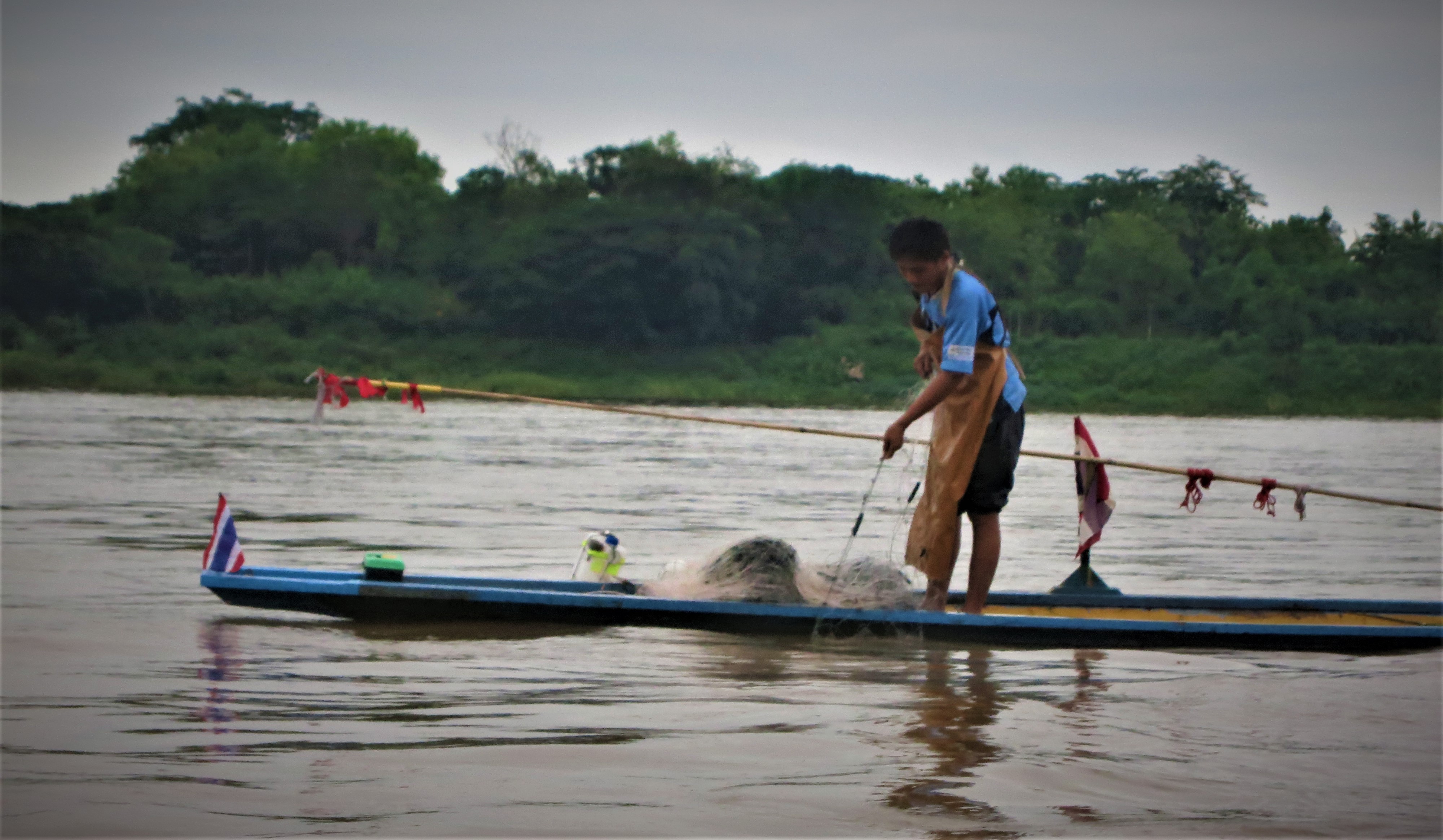
A fisherman on the Mekong River in Loei Province, Thailand, near the border with Laos. Fishermen in the area blame the recently completed Xayaburi Dam in Laos for the drop-off in fish catches. Photo by Tom Fawthrop.
However the MRC has never updated or amended its advice on hydropower guidelines to warn about the lack of scientific proof behind the dam developers’ claims about the effectiveness of fish ladders.
Philip Hirsch, emeritus professor of human geography at the University of Sydney, observed an important gap between the MRC’s scientific role and its river governance. “The scientific evidence for damage done by dams to the livelihoods of small-scale fishers is unequivocal, and as such dams are hardly a sustainable source of energy,” Hirsch commented. “What is missing, and long overdue on the part of MRC, is to employ its own publicly-funded science to question the discourse of sustainable hydropower.”
I raised these questions with the MRC Secretariat, and asked whether it was time to review hydropower impacts on the lower Mekong, or even push for a debate on a dam moratorium.
The answer from the Secretariat was dismissive, offering only their routine explainer, “Our efforts are much better spent on exploring ways we can avoid, minimize, and mitigate the impacts of all developments.”
Currently, the Luang Prabang dam is under construction, despite concerns it will destroy the World Heritage Site of the same name. Six more dams are planned by the Lao government.
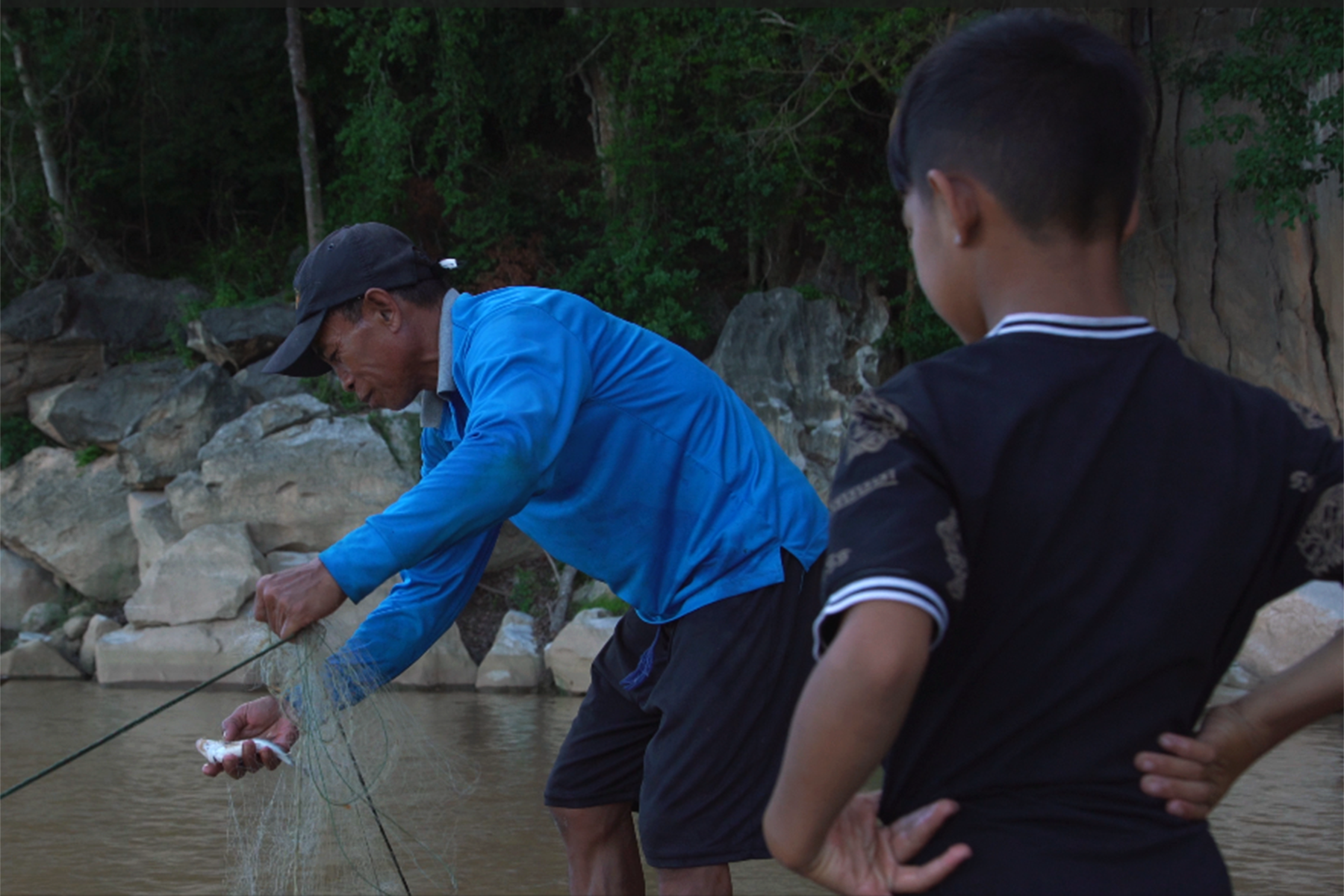
“Look how small the fish we catch nowadays are,” laments a fisherman on the Mekong near Luang Prabang, Laos. Photo by Tom Fawthrop.
Neglect of Fisheries Conservation
Since 2016, when the MRC estimated the value of lower Mekong fisheries at $11 billion, droughts, dams, and sand-mining have all contributed to the massive depletion of fisheries.
The MRC has always claimed in its advice to member-states that the net benefits from hydropower were far greater than the sum total of environmental and fisheries losses.
But this is disputed by an international research report on hydropower and Mekong ecoservices, which found that the economic losses from negative hydropower impacts on the natural resources of the river far exceeded the revenue from 11 scheduled dams on the lower Mekong.
One of the researchers, British economist David Wood, a natural resources expert, explained in an interview: “If you add up losses from fisheries, sediment and social impacts, they are far greater than the benefits from hydropower.” The combined financial losses based on 11 scheduled dams adds up to a whopping $7.3 billion.
These researchers claimed that the importance of fisheries losses have always been undervalued by the MRC and other policymakers, who neglect the full range of economic activities that are dependent on a healthy Mekong.
A similar perspective prompted Cowx of Hull International Fisheries Institute to urge policymakers “to elevate fisheries in decision-making on water resources and energy and look for better alternative energy mixes” than hydropower, such as solar and wind power, in his presentation at a MRC regional stakeholder forum in June 2022.
Dramatic changes in the world energy market have enabled solar and wind power to become cost-effective replacement for hydropower in many countries.
But there is no indication that the MRC is about to heed the recommendations of its own fisheries consultants and elevate fisheries to the level of core policy sectors like energy, hydropower and infrastructure.
The MRC still refers to hydropower “as a cost-effective source of renewable energy,” in spite of substantial evidence that points to cheaper alternative energies, according to the International Renewable Energy Agency.
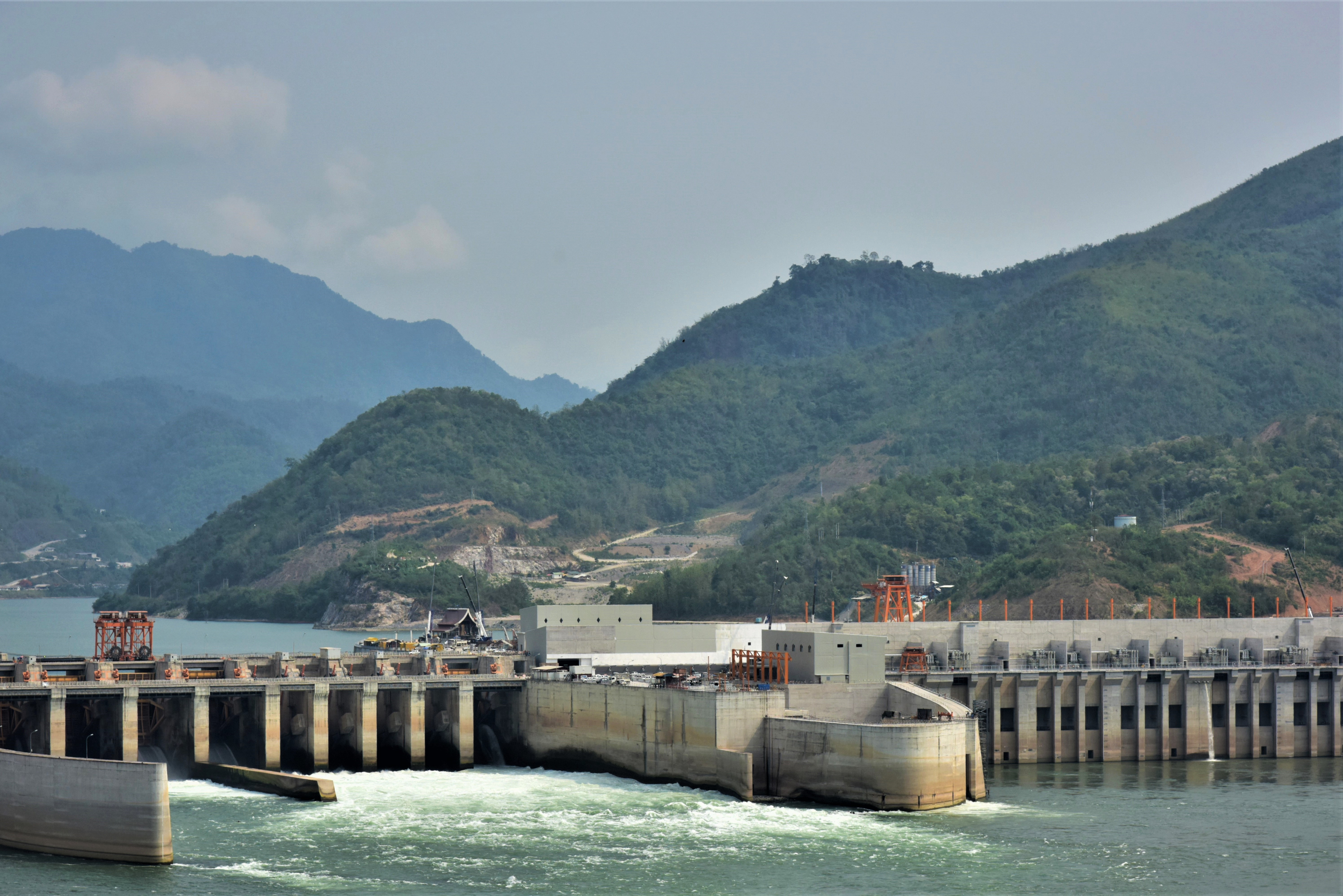
This media handout photo from CK Power shows the Xayaburi Dam in Laos, which was completed in 2019. Downstream fishermen say the dam has ruined their fish catches.
Cambodia is only MRC member-state that has deviated from the MRC hydropower narrative and declared a moratorium on mainstream Mekong dam projects.
Prime Minister Hun Manet has declared that building mainstream Mekong dams would have “a huge impact” on the environment – both for the river and for Tonle Sap Lake, a key source of fish and protein for the people of Cambodia.
According to the report from Friend et al, “underlying the neglect of Mekong fisheries is the widespread assumption that wild capture fisheries will inevitably decline as countries ‘develop’ economically, as if it were somehow a natural feature of economic development.”
This underlying neglect of fisheries and the ecosystem’s key role in traditional food systems, it is argued, is driven by regional policies of development that prefer the Western-based food production model of agro-food corporations.
MRC’s CEO, Dr. Anoulak Kittikhoun, has responded to critics, saying, “We ask for their understanding about the limits of the MRC and our constraints.”
One of those critics is Lan Mercado, the Asia-Pacific regional director of the World Wildlife Fund. She commented that the MRC “has a duty to provide scientific advice on what is best for the river and the people rely on it.”
Is the watering down of scientific recommendations to make them more palatable to member states really in the best interests of the Mekong?
The scientific evidence is piling up: The Mekong and its fisheries are in dire straits, and dams are to blame. But the alarm bells do not seem to be reaching the ears of Mekong decision-makers.
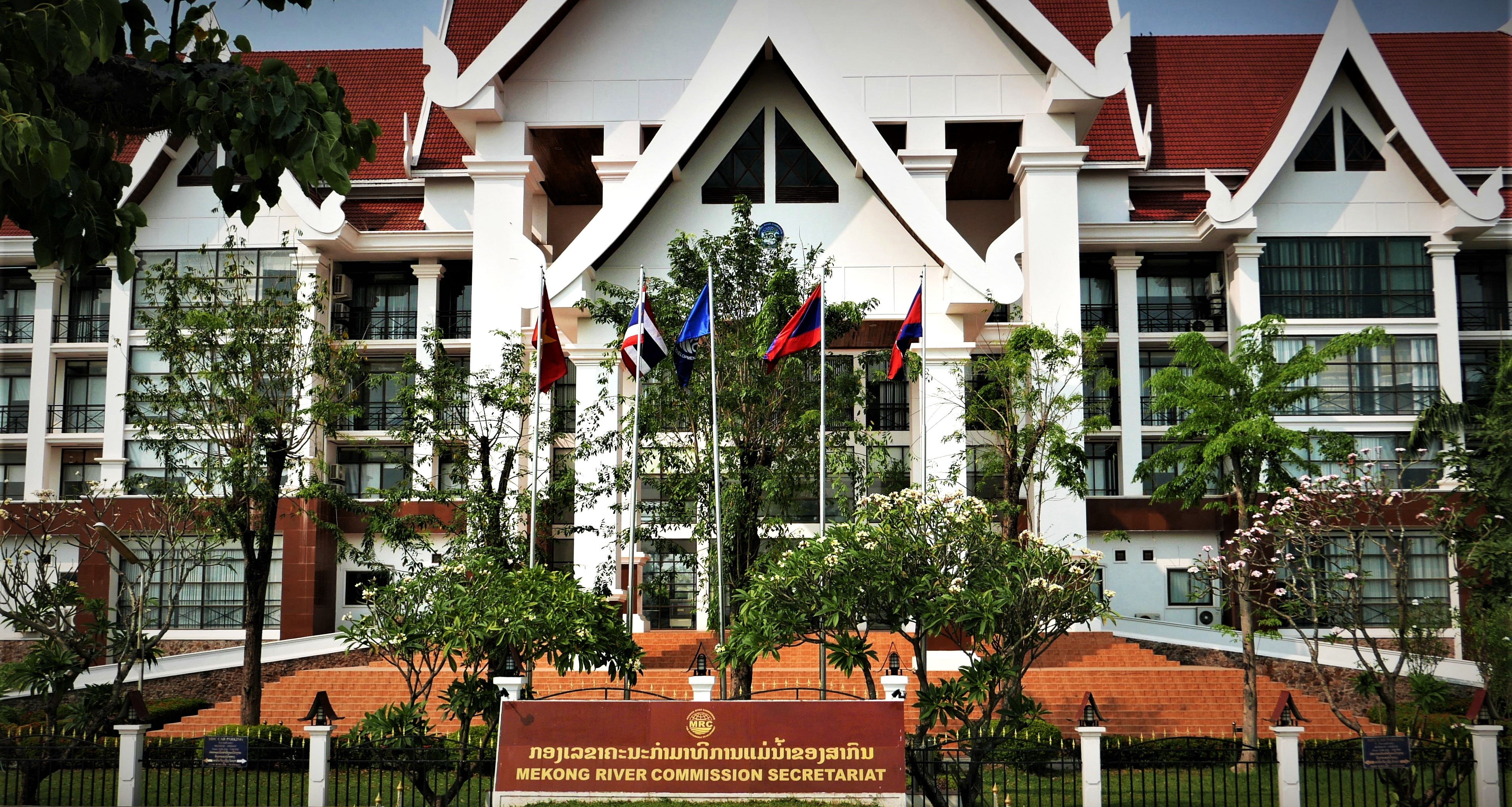
The Mekong River Commission headquarters in Vientiane, Laos. Photo by Tom Fawthrop.













